Black engineering awards conference honors 5 Sandians
Five Sandia employees are recipients of 2018 Black Engineer of the Year awards:
- David Samuel received an Outstanding Technical Contribution award
- Mark Martin, Imani Adams, and Shauna Adams received Modern-Day Technology Leader awards
- Christopher Collins received an Outstanding Achievement as a Science Spectrum Trailblazer award
BEYA is a program of the national Career Communications Group, an advocate for corporate diversity, and part of its Science, Technology, Engineering and Math (STEM) achievement program. The awards recognize the nation’s best and brightest engineers, scientists, and technology experts. The five honorees received their awards at the 2018 BEYA STEM conference in Washington, D.C., in February.
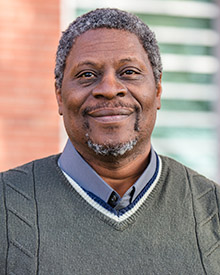
David Samuel
David has worked at Sandia for 41 years, and for the past 20 he served in a critical role as Tech Area 5’s sole mechanical designer, responsible for CAD design, product definition, and fabrication for test fixtures and handling equipment for research and development experiments at the Labs.
“As a trusted expert, David displays innovation and creativity in his unique designs,” Richard Graham, a Sandia manager, says. “He works closely with his team to thoroughly understand the product form, fit, and function requirements while including safety, security, and quality in his designs.”
David is passionate about his work and has a philosophy that drives him to excel: “Good parts make good test results possible, and good test results lead to good data,” he says. “From good data, you can make good, informed decisions.”
David says one of his most interesting projects was developing a shutter array for holding cobalt-60 sources in a circular arrangement for radiation testing. His array lets the user adjust the intensity of the radiation field around the pins by expanding or shrinking the diameter of the array. This design improves the fidelity of experiments, gives researches more options, and extends the useful life of the cobalt-60 pins.
“The shutter array is a unique custom-designed device, and it is all the brainchild of Dave,” says Maryla Olszewska-Wasiolek. “He did not have much to go by when he started developing the conceptual model, because there is no other device like that anywhere. He not only developed the concept of the array through multiple design iterations, brainstorming sessions, and incremental improvements, but he also oversaw the design implementation, all the way through fabrication and deployment. This complex and challenging project is a testament to Dave’s professional skills and creativity.”
David has made a habit of helping others during his career, both at Sandia and in the community.
“David has been a mentor and project lead to new employees and several intern students,” Graham says. “He takes the time to explain the fundamentals of design, gathering requirements, and the art of creating a drawing.”
As part of his community outreach, David was the lead instructor for computer literacy classes through Sandia’s Hands on Minds on Technology program (now known as HMTECH), a class that has students disassemble a computer, learn about each part, and then reassemble it and ensure it works correctly.
“I also taught them basic programming, and they would write a program that their parents could interact with during an open-house celebration,” David says. “Teaching was really fun, and some of the kids have gone on to work in the computer industry, which is a plus.”
He served as a judge for a student Electric Car Challenge, volunteers with Habitat for Humanity, and is an active member of Albuquerque’s SolidWorks users group. His work has been honored through numerous Sandia Employee Recognition Awards and NNSA Awards of Excellence.
Mark Martin
Mark’s 28-year career at Sandia has focused on reliability engineering, component design, development and testing, classification, nuclear material control, and management.
“As he climbed the ranks from an undergraduate student to a manager, Mark has proven time and again that he is an innovator and leader,” Sally Uebelacker, senior manager of safeguards and security, says.
As a system and component reliability engineer, Mark assessed the performance for multiple nonnuclear components in the nuclear weapon stockpile, including strong-link switches and neutron generators. He worked to develop sampling plans to evaluate the performance of weapon components that are still being used today. He earned the Aspire to Excellence Award from DOE for his support in assessing component reliability.
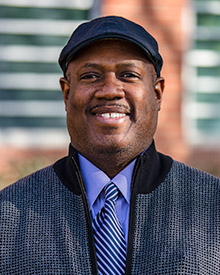
Mark participated in Sandia’s Weapon Intern Program in 2000 and then became a product realization team lead for Sandia’s neutron generator monitoring work. Among the career accomplishments he is most proud of, Mark cites his work to develop a new modernized neutron generator monitor for the W87 Joint Test Assembly Weapon Program being qualified on the Minuteman missile.
“I had to redesign a monitor with unique challenges, and in doing that process, we found there were issues with the output of the neutron generator that were affecting our measurements,” Mark says. “We had to figure out how to reduce the noise so we could get accurate measurements. It was a unique challenge that we accepted and overcame.”
Meeting these challenges led to multiple awards such as Sandia’s President Quality Awards in 2005 and 2006 and NNSA Defense Programs Award of Excellence for significant contributions to the Stockpile Stewardship program.
Mark joined the classification office where he became the manager and also served as the transmissibility reviewing officer for the Direct Release Program at Sandia, a role that supports the Mutual Defense Agreement between the United States and the United Kingdom. Inspection of Sandia’s Direct Release in 2015 found that Sandia has an exceptional training program that was managed by Mark.
In addition to his work, Mark recruits for Sandia by visiting universities, doing tech talks, and talking with students about career decisions, how to create a résumé, and how to interview for a job. Mark enjoys worshiping at the church his family attends, going to movies, and vacationing with his wife, Peggy.
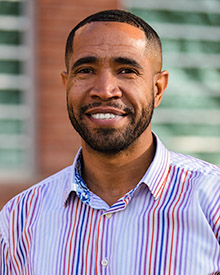
Christopher Collins
During Christopher’s 15 years at Sandia, he has contributed technically and led projects in support of national security. He has performed award-winning research on
projects related to satellite communications, tagging, tracking, and locating, and nuclear weapons flight testing and production capabilities. Chris is also a graduate of the Weapon Intern Program.
“I enjoy being able to work on cutting-edge projects with great people,” Christopher says. “I like being part of Sandia’s mission and contributing to that mission. The work has a sense of accomplishment to it — it’s fulfilling work.”
In addition to his technical contributions, Christopher is heavily involved in recruiting and mentorship activities, especially in support of minorities seeking science, technology, engineering, and math (STEM) careers.
“Chris has distinguished himself as a technical contributor, a leader, a mentor, and an active supporter of the Laboratories’ recruiting efforts,” Daniel Briand, a systems analysis and decision support senior manager, says. “He has repeatedly demonstrated his commitment to Sandia’s mission, is dedicated to addressing the most thorny of national security challenges, and is passionate in his support of minorities seeking science and technology careers.”
Christopher is the recruiting chair for Sandia’s Black Leadership Committee and has presented at several universities focused on the nation’s need for students to pursue STEM careers.
“Chris built a pipeline between historically black colleges and universities and the student intern program at Sandia, and through that effort, initiated recurring interactions with executive leadership to foster continued support,” Kent Meeks, director of strategic plans and policies at Sandia, says. “The number of African-American students hired by Sandia has significantly increased due entirely to Chris’ dedication and tenacity.”
Christopher says he became interested in engineering in high school, attending classes in the morning and working at the Applied Research Laboratory at the University of Texas (Austin) in the afternoon. He worked on modeling and simulation software to analyze radio frequency communication links and predict electromagnetic propagation in the atmosphere. He says that time and mentorship with engineers and scientists encouraged him to pursue a degree and career in engineering. He now makes it his mission to encourage and support students interested in exploring STEM.
“On the national level, the number of students going into STEM is decreasing,” Christopher says. “Getting a good education and pursuing a career in STEM is great for the nation. My advice to students is don’t get discouraged if some classes are challenging. Focus on the bigger picture of pursuing your dreams. Stay focused, encourage yourself, and remain positive. Keep telling yourself that you will succeed.”
Chris is also involved in community outreach, volunteering for the HMTECH program, Habitat for Humanity, Upward Basketball, the Global Leadership Summit — a worldwide event that teaches and encourages inspirational leadership and skills development — and playing the saxophone in the band at church.
Imani, who has worked at Sandia for six years, supports the Power Source Technology group, where she is responsible for verifying and asserting the verification and validation design evidence for requirements provided to her customers. She is also responsible for understanding and working through the 6.X Stage Qualification Process for product realization. Imani is also a course instructor and developer for National Security Quality Training 800: Preventing Supplier Quality Problems. In her roles on various teams Imani has received numerous Employee Recognition Awards. Imani was also a recipient of the NNSA Defense Programs Award of Excellence for her support on the Strategic Planning and Execution Team for the Kansas City Responsive Infrastructure, Manufacturing, and Sourcing (KCRIMS) requalification efforts.
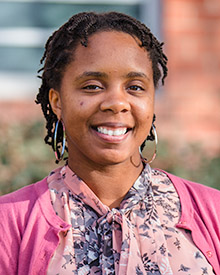
In addition to her technical work, Imani is extensively engaged in outreach and recruiting efforts focused on sharing her passion for science, technology, engineering, and math with women and minority students.
“There’s room in the STEM field for everyone, and I’m glad I can be a representative for both women and minorities,” Imani says. “When you don’t see yourself represented, it’s hard to see STEM as something you can do.”
Imani serves as a campus recruiter, conducting classroom visits and mock interview workshops. She has mentored and coached more than 30 high school and middle school students and arranged multiple STEM and professional development workshops, college tours, and has coached multiple competitions through her work for the National Society of Black Engineers. She is an instructor and coordinator for Sandia’s HMTech summer outreach program, where she manages the logistics of coordinating 18 different STEM-focused interactive classes for middle and high school students. She also participates in other outreach programs through Sandia, including serving on the coordinating committees for STEM recognition days that expose students and their parents to different focus areas. While she has served in this area, more than 150 children and their parents have attended various programs.
“Imani has demonstrated an exceptional desire to pass on her passion for science, technology, engineering, and math to the generation that follows her,” Dennis Owens, a product acceptance and supplier quality manager, says. “Her relentless and tireless efforts to reach our future scientists and engineers is a testimony to a promising legacy in action.”
Imani’s interest in math and science grew in middle school when she joined an engineering organization that introduced her to different engineers and research opportunities. She says that the representation within the field and the opportunity to talk with those individuals spurred her to take even more math and science classes and learn more about engineering as a career.
“When I talk with students, I tell them not to think that they aren’t good at math or they aren’t good at science,” Imani says. “If you are interested in math or science, you’ll find a field that fits you. Things you are passionate about, even if they are hard, are things you can work through and learn from the obstacles. It can become one of your biggest strengths. Never limit yourself because of your perceived abilities.”
Imani serves on the United Way Young Leaders Society board, and is actively involved with her church, where she is president of the usher board and a member of the building committee. She and her sister Shauna, who also received a BEYA award, established the “It’s All About ME!!” Mechanical Engineering Endowed Scholarship for undergraduate students at North Carolina Agriculture & Technical State University, their alma mater.
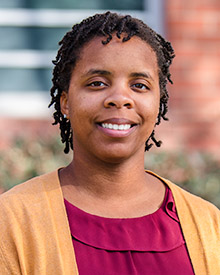
Shauna Adams
Shauna has worked at Sandia for six years in surety engineering, providing quality assurance and engineering support to nuclear weapon component and subsystem teams. She has successfully completed design, verification, and production requirements for two weapon system design reviews. She also trains scientists and engineers on advanced technical methods for product qualification, training more than 120 Sandia employees and 210 DOE employees at various sites. She has won awards for her contributions in delivering on-time flight test hardware and for her contributions in additive manufacturing qualifications.
“The teams that she works on all rave about her engineering performance,” Peter Gelb, a Sandia manager, says. “She works on very high consequence subsystems that are critical to our national security, and her colleagues all lobby me for more of her time. She is a great example for new engineers and a mentor.”
In addition to her technical contributions, Shauna is passionate about outreach, giving back, and inspiring the next generation of minority students to consider STEM education and career paths, as well as encouraging others in STEM fields to help build the pipeline.
“I encourage others to be available to reach out to people,” Shauna says. “You may be the only example someone sees of a certain career. Don’t be afraid to tell people about what you do, including the challenges and opportunities. You may help interest more students in STEM.”
Shauna is a volunteer, coordinator, and instructor for Sandia’s HMTECH Summer Program, working to expose minorities in middle school and high school to STEM-related activities and courses. She serves as an advisor, coach, mentor, and tutor to the Greater Albuquerque NSBE Jr. chapter, coaching the group’s regionally and nationally award-winning Try-Math-A-Lon, Vex Robotics, First Lego League Robotics, and Mathcounts teams. She serves on the United Way Young Leaders Society board, and is actively involved in her church in both ushering and the building committee. She also recruits for Sandia from North Carolina A&T State University, where she conducts career discussions and visits classrooms.
“She is very thoughtful in her planning to ensure that the curriculum for each program is relevant and provides hands-on activities that showcase the contributions that engineering can have on today’s society,” Theresa Carson, senior manager of supply chain integration and the former co-chair of Sandia’s Black Leadership Council, says. “She brings an excitement and passion that inspires learning and participation, and she is very dedicated to giving back to her community.”
Shauna says she knew she was interested in math and science early on and sought out math and science clubs and activities at school, including participating in NASA Langley’s summer high school Apprentice Research Program and the Langley Aerospace Research Summer Scholars Project. Now as a mentor and role model, she strives to pass on her passion to students by sharing that practical side of engineering.
“I was drawn to engineering because of the endless opportunities you have within the field,” Shauna says. “Everything you see has in some way been influenced by an engineer. The ability to use math and science in an applicable manner is what I really like about engineering.”